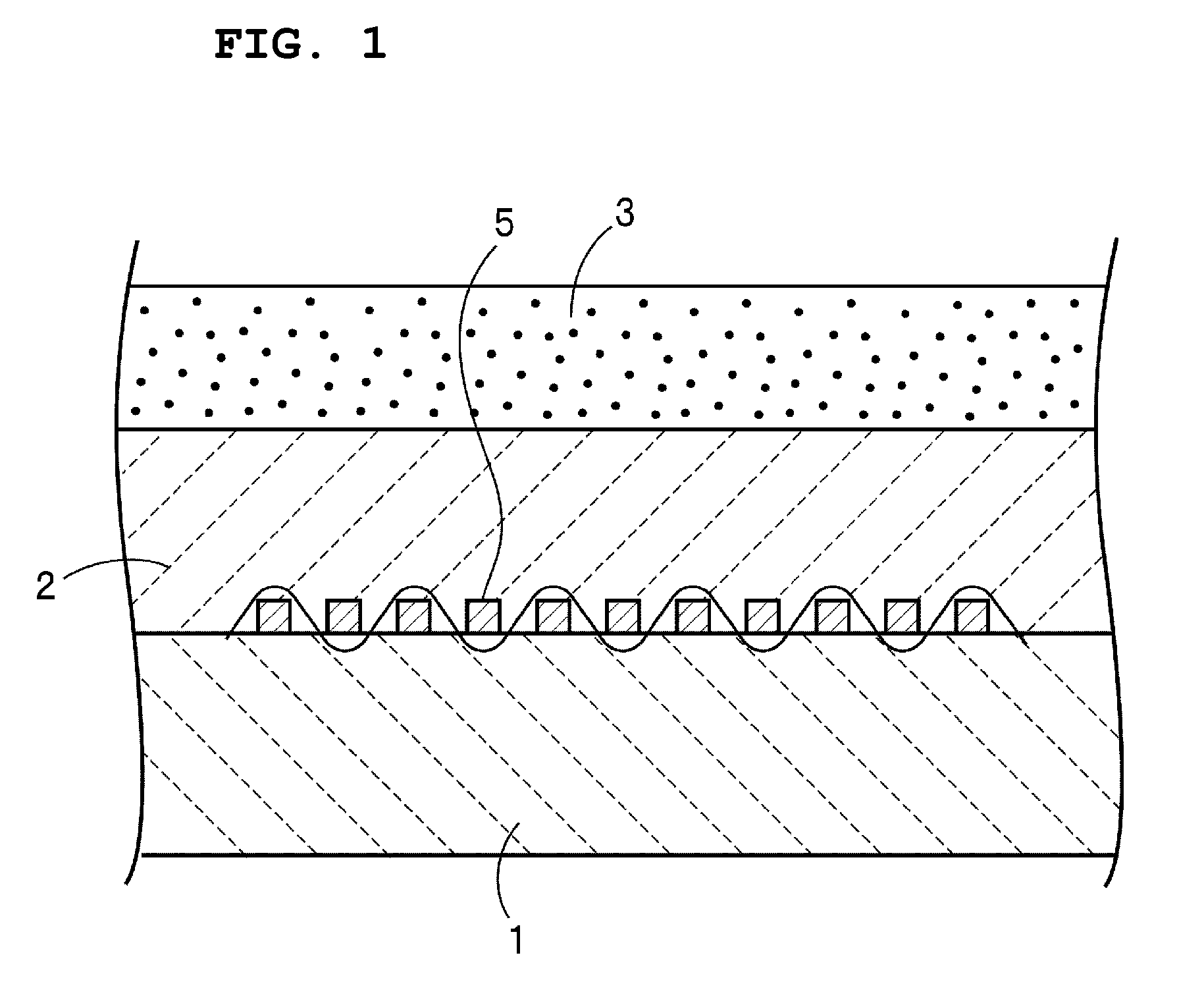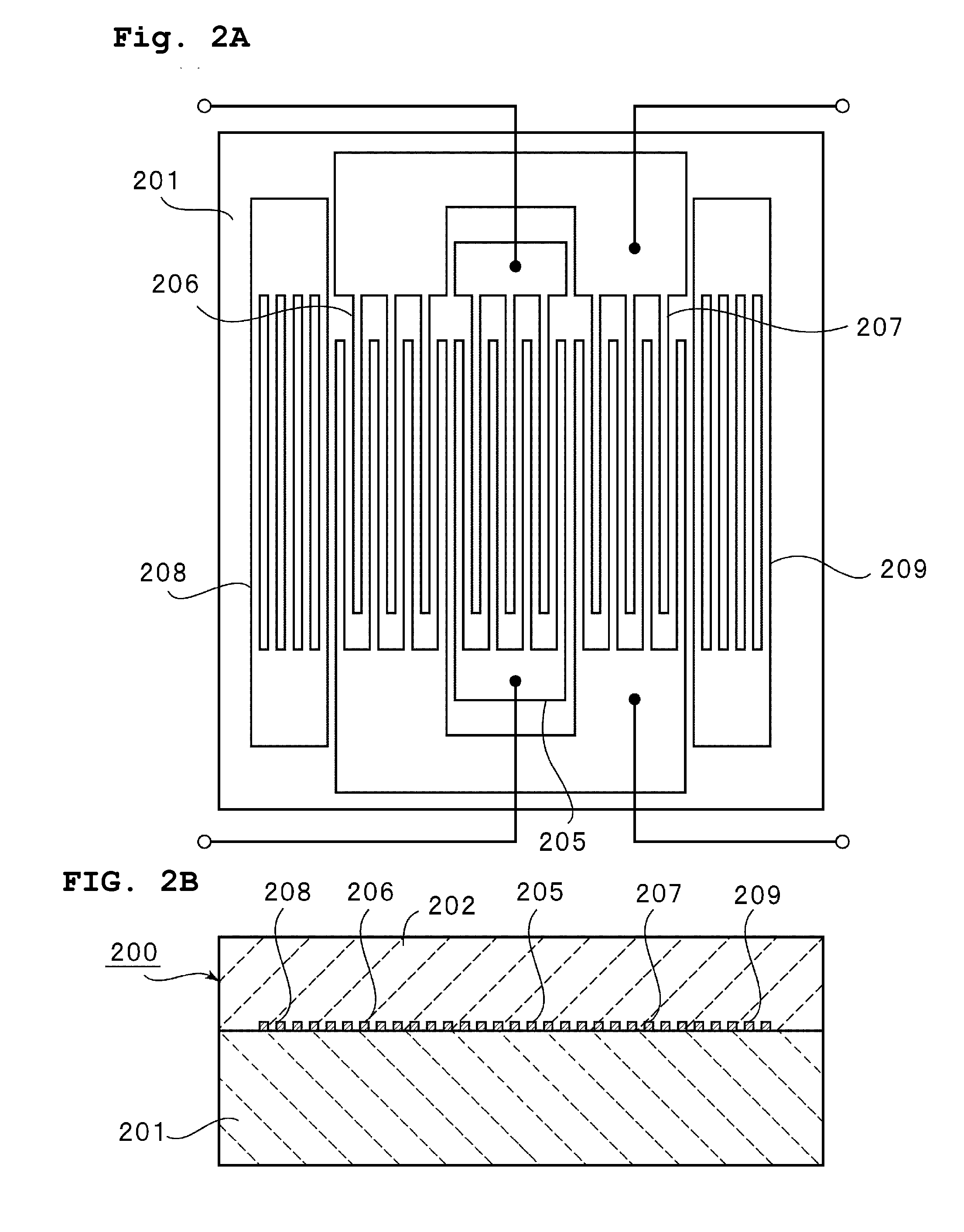Boundary acoustic wave device and process for producing same
a technology of acoustic waves and a process, applied in the direction of magnets, generators/motors, magnets, etc., can solve the problems of increasing the cost of surface acoustic waves, and affecting the frequency response of the device, so as to achieve a stable and effective production effect, and efficiently suppress the frequency variation
- Summary
- Abstract
- Description
- Claims
- Application Information
AI Technical Summary
Benefits of technology
Problems solved by technology
Method used
Image
Examples
example 1
[0083] A 15° Y-cut X-propagating LiNbO3 substrate was prepared as a first medium. The electrode structure shown in FIG. 2 was formed on the LiNbO3 substrate. That is, the input IDT 205, the output IDTs 206 and 207, and the reflectors 208 and 209 shown in FIG. 2A were formed. The electrodes were made using the following procedure: after washing the LiNbO3 substrate, a resist was spin-coated thereon, prebaked, and developed to form a resist pattern. A NiCr film and then an Au film were formed in that order by vacuum evaporation. The resist was lifted-off. The resulting electrodes were washed. Thereby, the electrode structure including the Au film having a thickness of about 0.055λ and the NiCr film having a thickness of about 0.001λ was obtained.
[0084] Next, a SiO2 film as a second medium and having a thickness of about 0.1λ was formed over the surface having the electrodes of the LiNbO3 substrate by RF sputtering, thereby producing a laminate shown in FIG. 2B.
[0085] A resist was sp...
example 2
[0095] A 15° Y-cut X-propagating LiNbO3 substrate was prepared as a first medium. The electrode structure shown in FIG. 2A was formed as in EXAMPLE 1. Many LiNbO3 substrates each having the electrodes were prepared.
[0096] A SiO2 film was formed over the electrodes disposed on the LiNbO3 substrate by RF sputtering. In this case, structures having the SiO2 films with thicknesses of about 0.1λ, about 0.3λ, about 0.5λ, and about 1.0λ were produced. Then, a polycrystalline Si film having a thickness of about 0.5λ was formed on each SiO2 film by RF sputtering. Thereby, a laminate having a laminated structure of poly-Si / SiO2 / electrodes / LiNbO3 substrate, i.e., the laminate of third medium / second medium / electrodes / first medium was prepared.
[0097] At this point, a propagating boundary wave was not a boundary acoustic wave but a surface acoustic wave, in which displacement was concentrated on the surface. The frequency adjustment was performed for the surface acoustic wave.
[0098] A resist w...
PUM
| Property | Measurement | Unit |
|---|---|---|
| center-to-center distance | aaaaa | aaaaa |
| mean center frequency | aaaaa | aaaaa |
| frequency | aaaaa | aaaaa |
Abstract
Description
Claims
Application Information
 Login to View More
Login to View More - R&D
- Intellectual Property
- Life Sciences
- Materials
- Tech Scout
- Unparalleled Data Quality
- Higher Quality Content
- 60% Fewer Hallucinations
Browse by: Latest US Patents, China's latest patents, Technical Efficacy Thesaurus, Application Domain, Technology Topic, Popular Technical Reports.
© 2025 PatSnap. All rights reserved.Legal|Privacy policy|Modern Slavery Act Transparency Statement|Sitemap|About US| Contact US: help@patsnap.com



